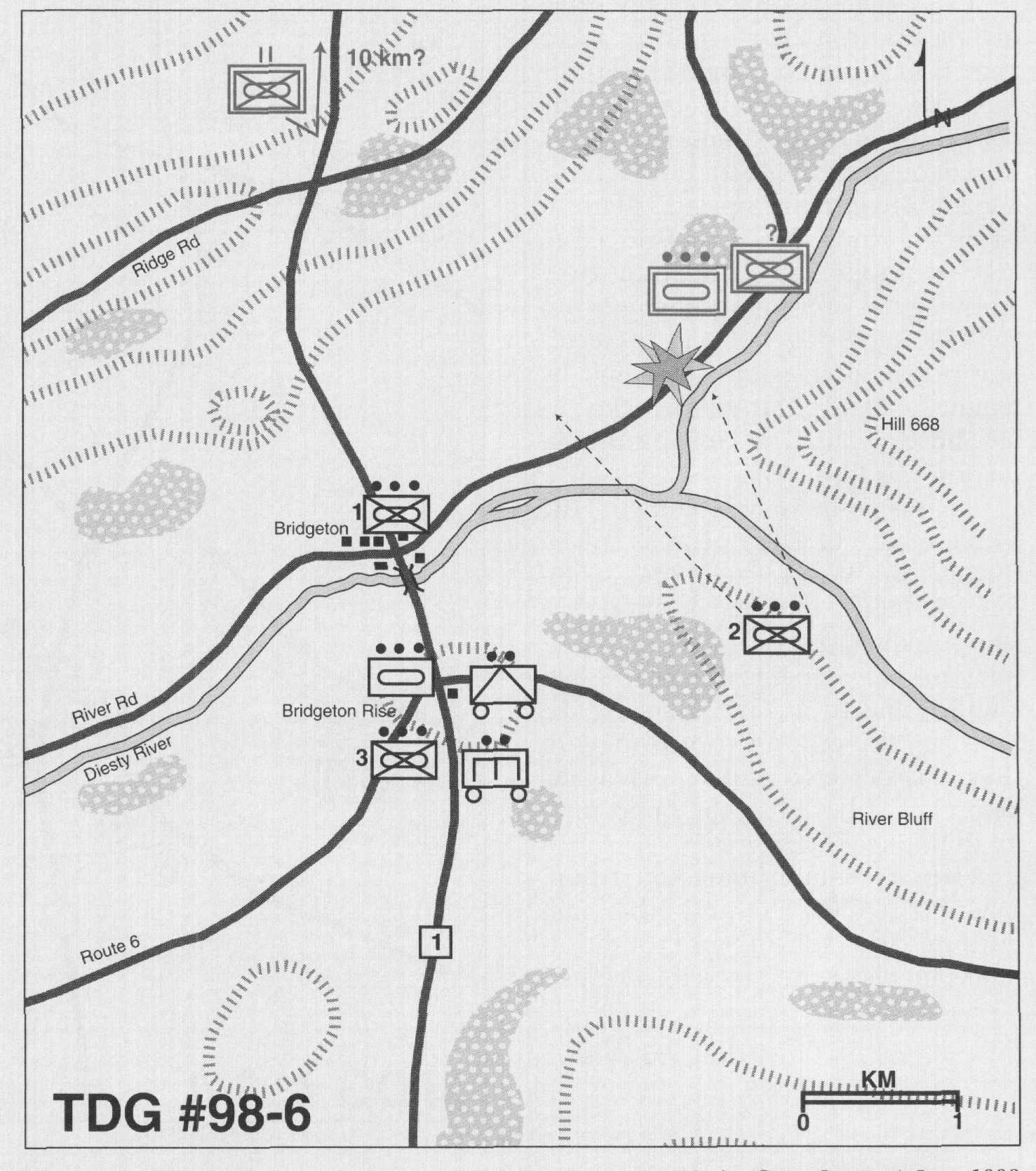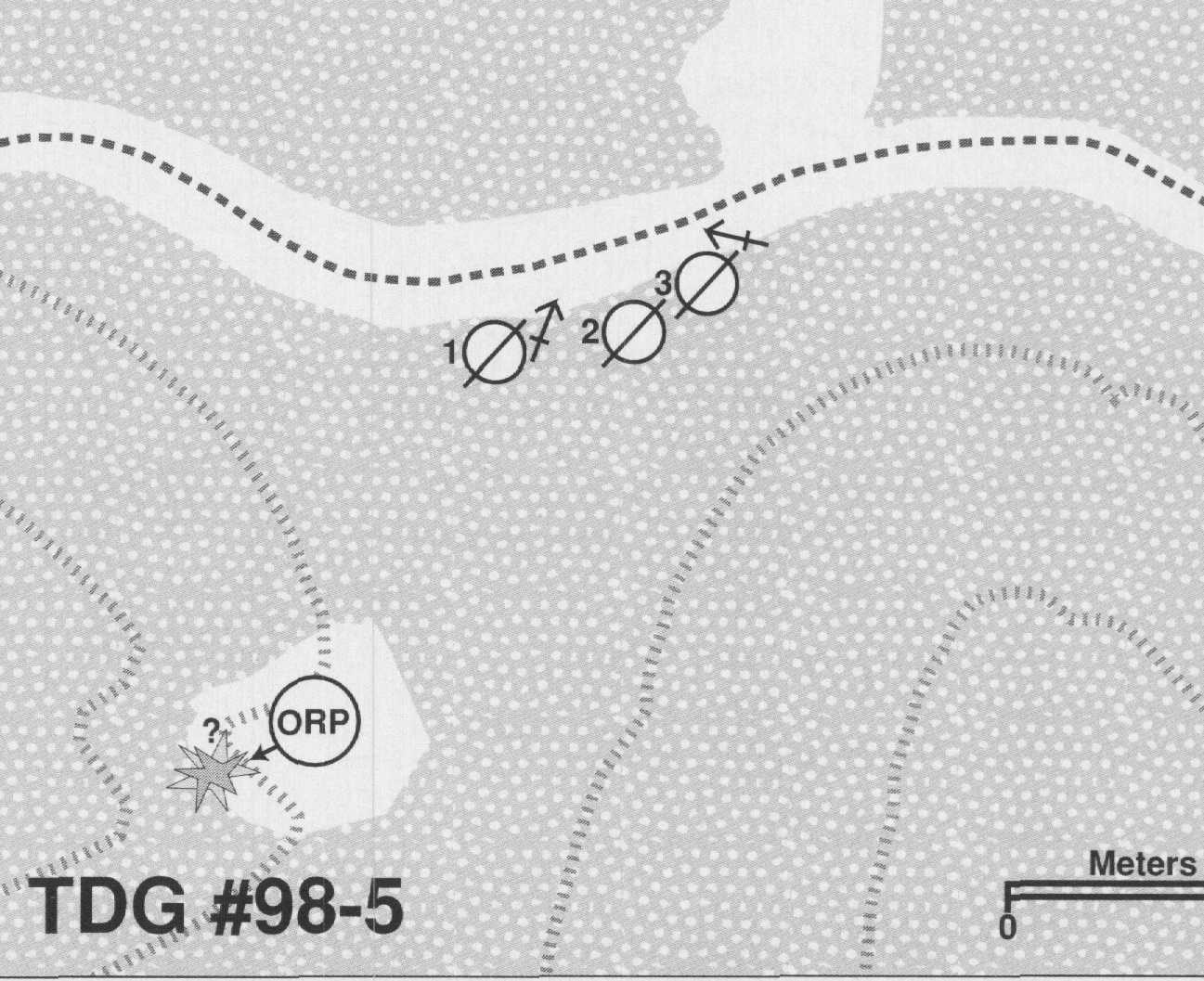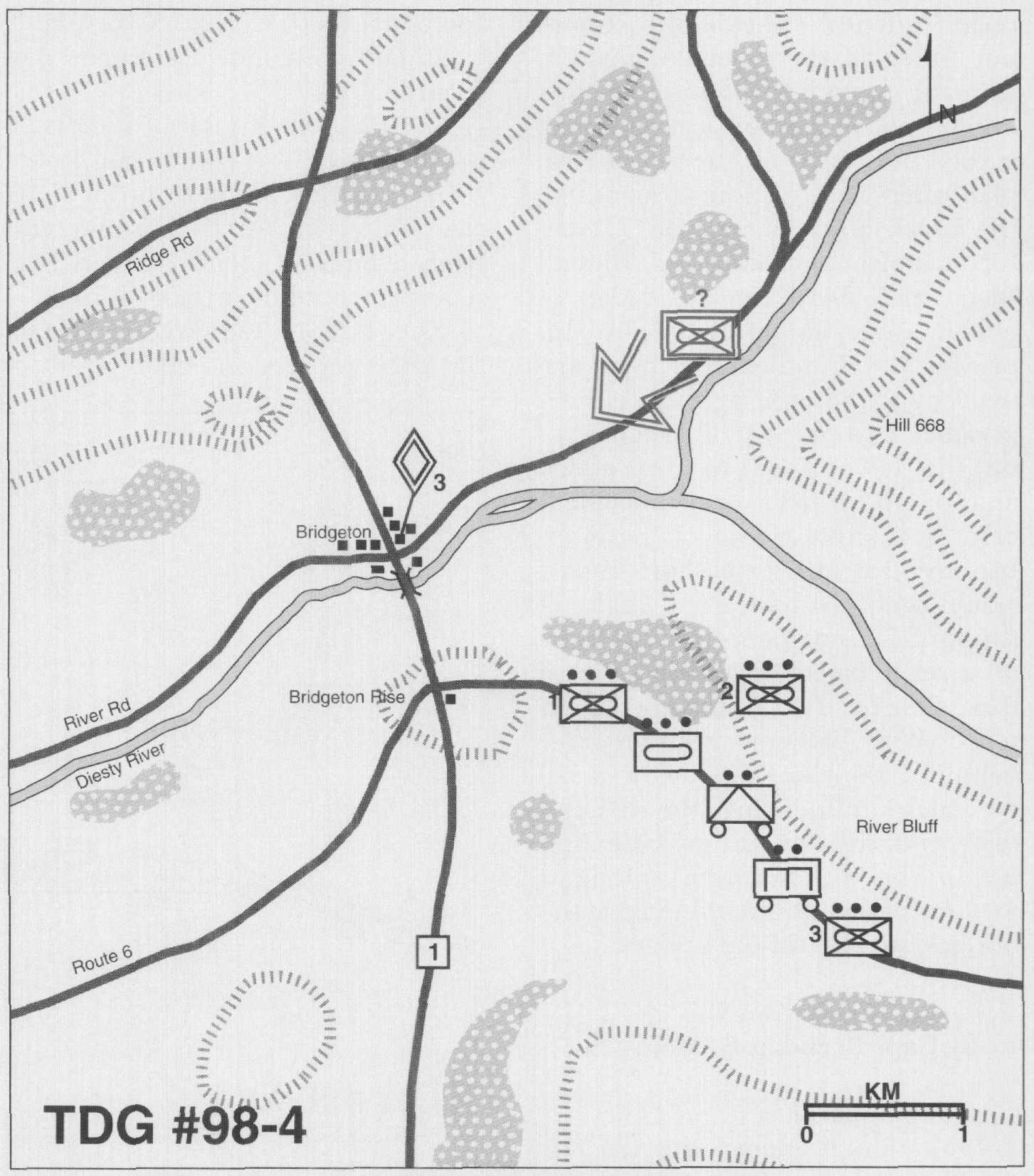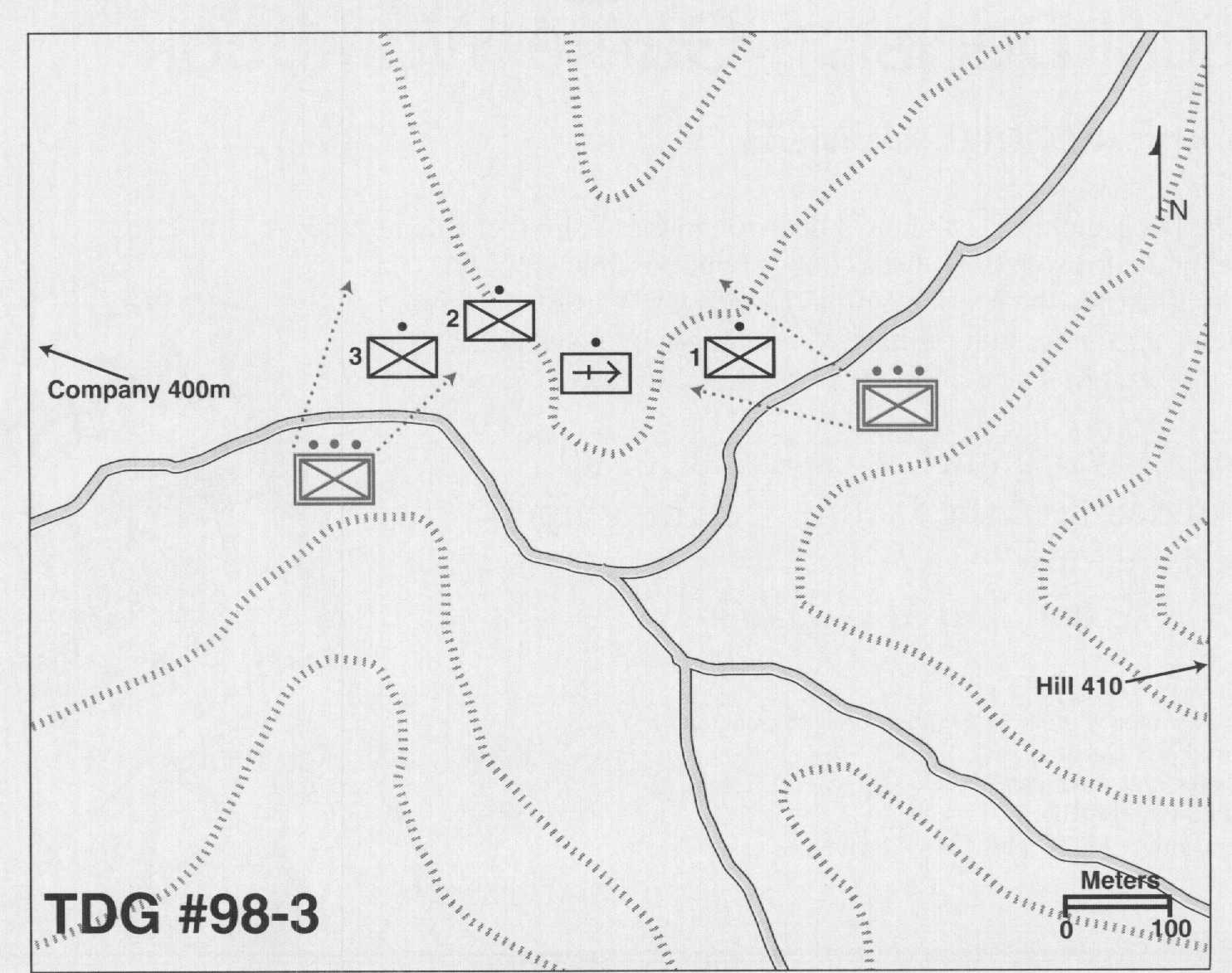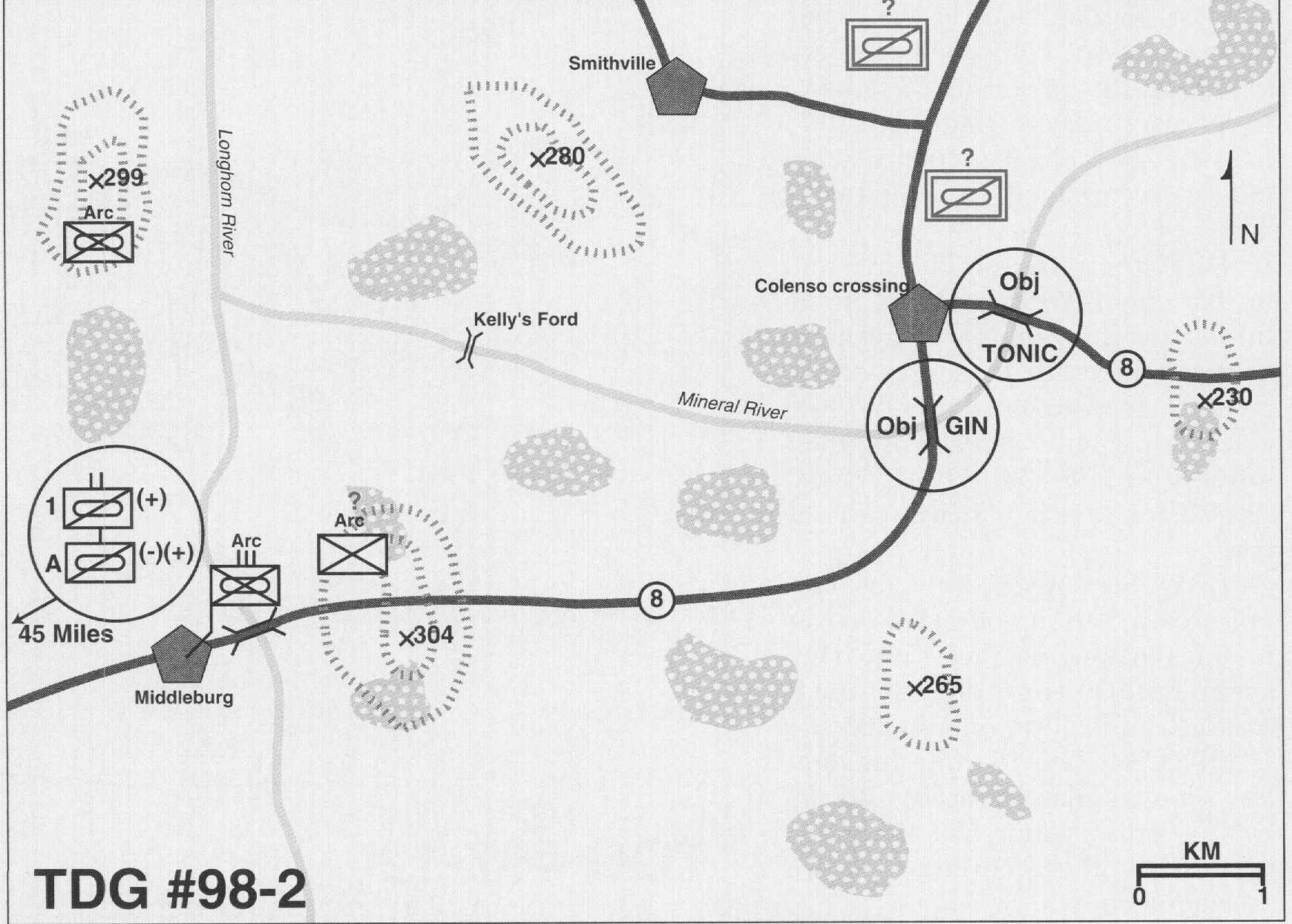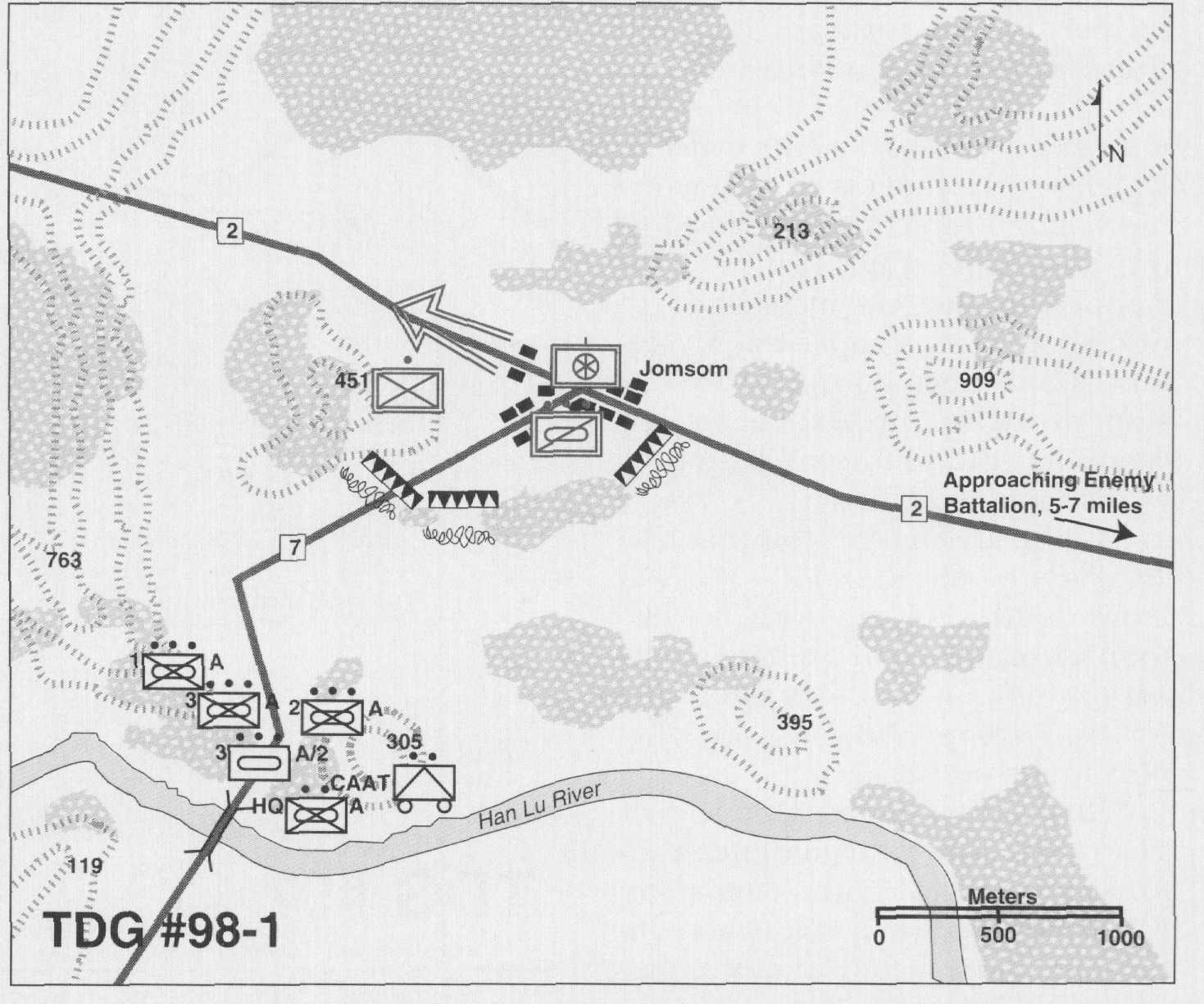By Maj John F. Schmitt, USMCR
Like TDG #98-6, this scenario is a continuation of TDG #98-4, “Bridgeton Crossing,” based on the author’s solution to that problem published in MCG, Jun98. Only this time, things have turned out differently.
Situation
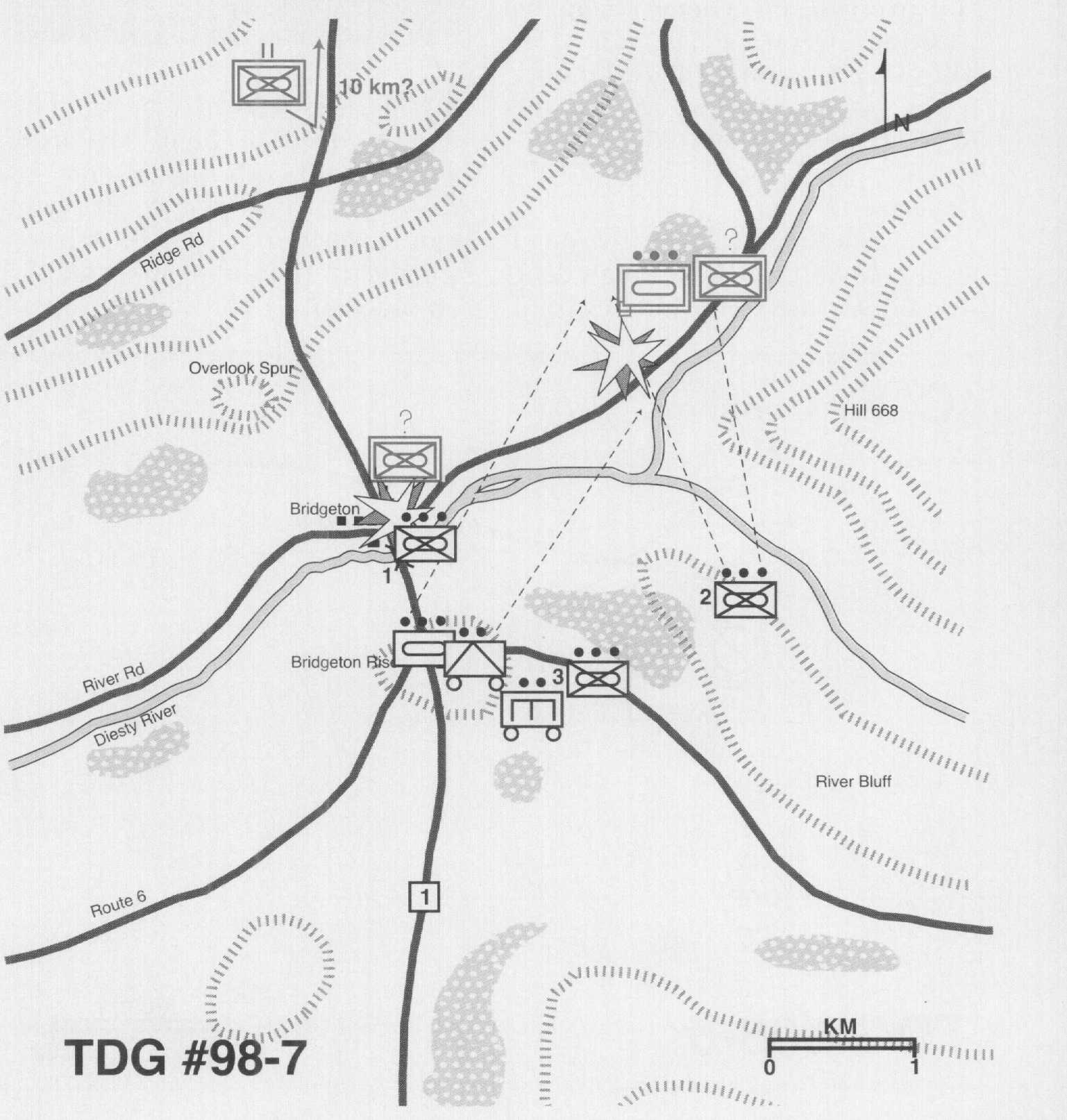 You are a rifle company commander in 1st Battalion, 3d Marines. Your company is mounted on AAVs and has been reinforced with a tank platoon, TOW section, combat engineer section, and Dragon section (attached to the rifle platoons). As the MEF advances generally north, your regiment has been ordered to swing west and seize a crossing of the Diesty River at Bridgeton in order to facilitate the continued advance. Intelligence now reports an enemy mechanized battalion heading south on Highway 1 to reinforce Bridgeton, expected to arrive sometime midmorning. Your company has been ordered to conduct a reconnaissance-in-force toward Bridgeton along Rte 6 in order to ascertain the nature of enemy defenses.
You are a rifle company commander in 1st Battalion, 3d Marines. Your company is mounted on AAVs and has been reinforced with a tank platoon, TOW section, combat engineer section, and Dragon section (attached to the rifle platoons). As the MEF advances generally north, your regiment has been ordered to swing west and seize a crossing of the Diesty River at Bridgeton in order to facilitate the continued advance. Intelligence now reports an enemy mechanized battalion heading south on Highway 1 to reinforce Bridgeton, expected to arrive sometime midmorning. Your company has been ordered to conduct a reconnaissance-in-force toward Bridgeton along Rte 6 in order to ascertain the nature of enemy defenses.
The weather is lousy and you doubt if much will be flying until it clears. You approach Bridgeton with 2d Platoon deployed onto River Bluff to protect your blind right flank. Gaining a vantage point overlooking the town, you discover that Bridgeton seems to be unoccupied except for what looks like a reconnaissance patrol. Just then, 2d Platoon reports “enemy mech on the River Road about 3 clicks east of Bridgeton. So far I count 6 APCs and 2 tanks headed southwest, but there could be more coming into view.” Convinced that you have a momentary opportunity to seize a critical crossing site, you order 2d Platoon to engage and 1 st Platoon to take the town immediately. You put the tanks and TOWs in overwatch at Bridgeton Rise and hold your 3d Platoon and engineers in reserve. Your FO calls for fire east of the town. Once your platoons are on the move, you report your decision to battalion. 1st Platoon races for the town and appears to have crossed the bridge into the town without resistance. Your tanks and TOWs succeed in holding off the enemy column from the east; a couple of enemy tanks have been knocked out. The battalion commander comes on the net: “Imperative you hold Bridgeton until we can reinforce. You’re now division main effort. Hang on; we’ll be there as fast as we can. Good work.”
Hardly moments later, Bridgeton Rise begins to come under artillery fire and you hear and see explosions and sounds of combat erupting from the town. You are unable to contact the Ist Platoon, but it has obviously come up against well-concealed, wellprepared defenses-some sort of urban ambush-deeper in the town. After a couple of extremely long minutes an unidentified voice, which you believe to be from the 1st Platoon, reports, “We’ve run into a mess. All the amtrac have been hit. It’s awful. The lieutenant’s dead. We’re in buildings just across the bridge, but everybody’s hurt. We need help.” The time is now 0920. As of 10 minutes ago, battalion still had no word on the enemy battalion to the north. What now, Captain?
Requirement
In a time limit of 3 minutes, issue any instructions and make any reports/requests. Once that is done, provide a sketch of your plan and a brief explanation of your decision. Submit your solution to the Marine Corps Gazette, TDG #98-7, P.O. Box 1775, Quantico, VA 22134 or fax 703-640823.


